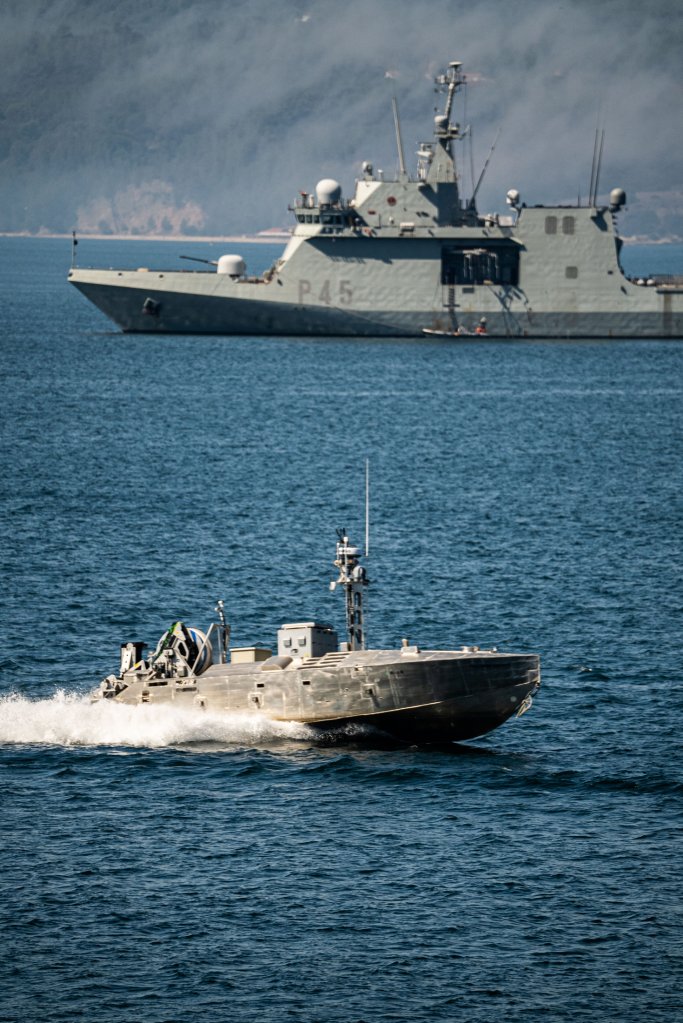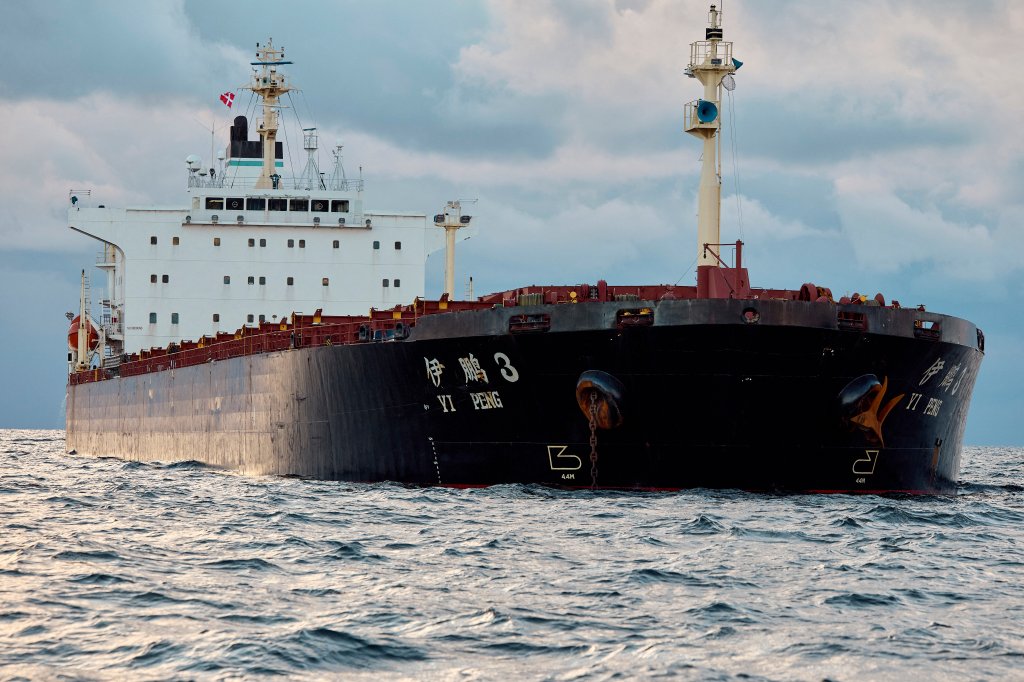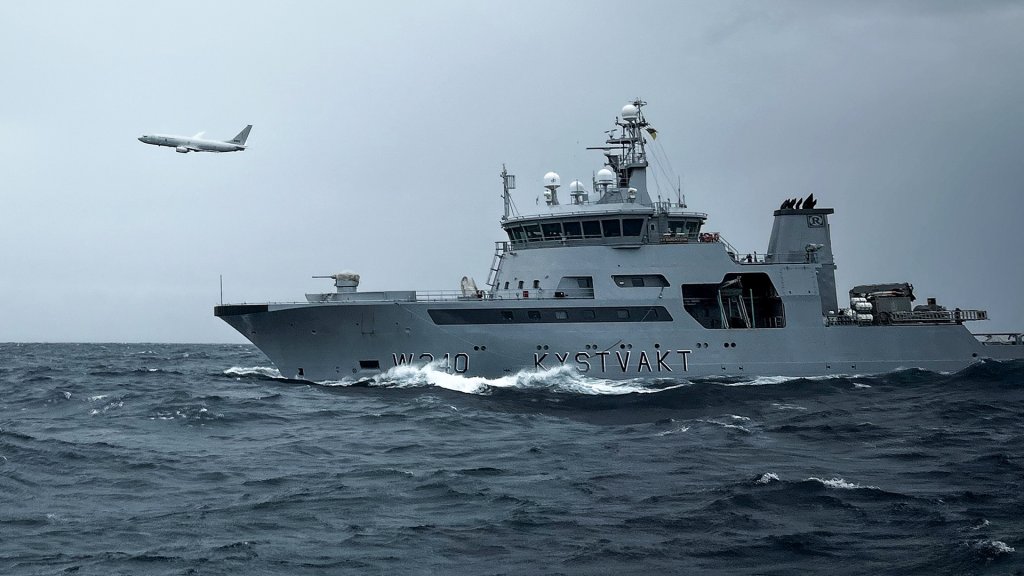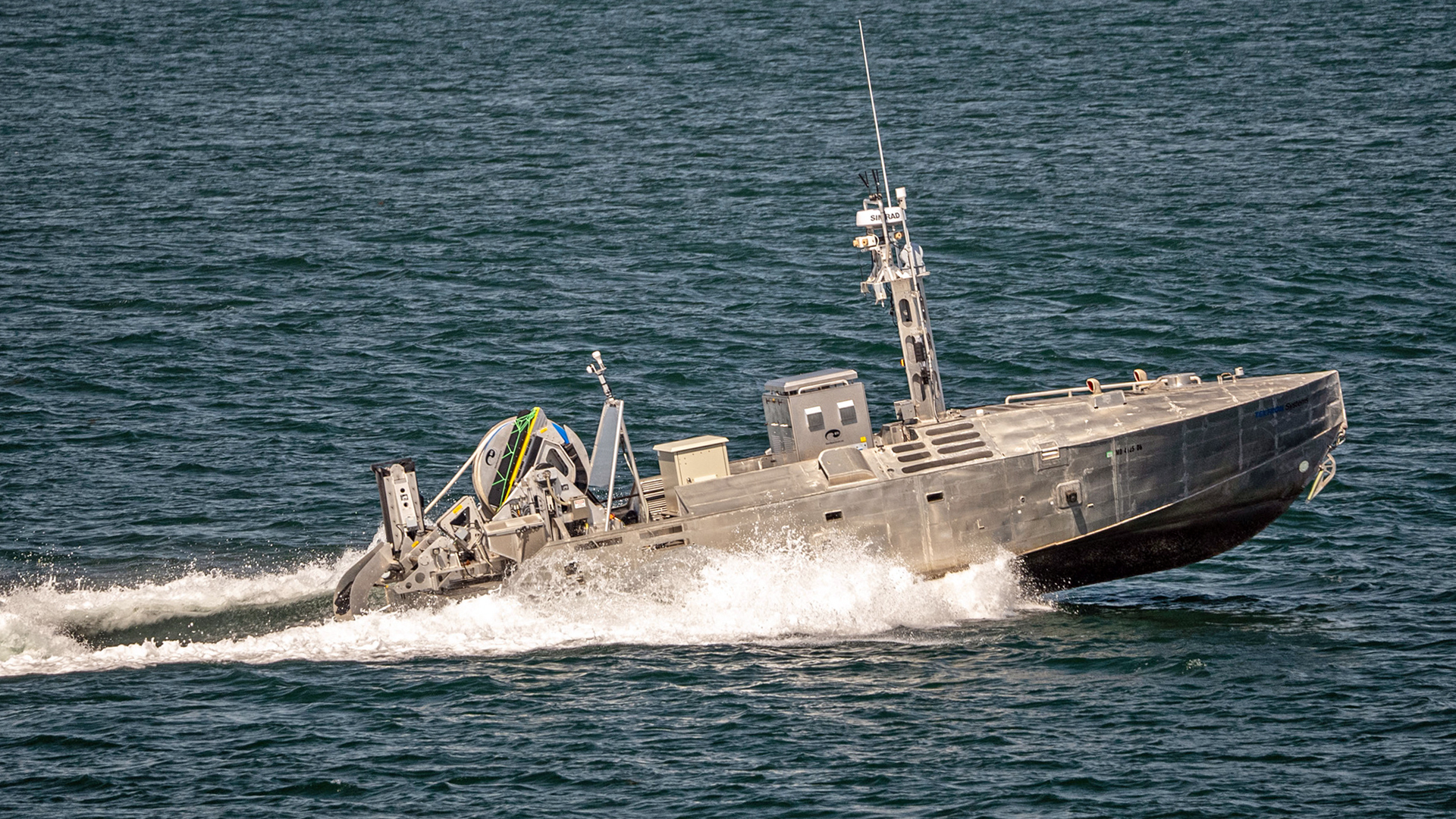In the coming weeks, uncrewed surface vessels (USVs) will join NATO’s new Baltic Sentry effort to protect power and communications cables running under the Baltic Sea, some of which have recently been sabotaged. The USVs, also known as drone boats, will help establish an enhanced common operating picture to give participating nations a better sense of potential threats and speed up any response.
It is the first time NATO will use USVs in this manner, said a top alliance commander.
NATO’s Allied Command Transformation (ACT) “will bring some new [USVs] at the speed of light,” said French Adm Pierre Vandier, the Supreme Allied Commander Transformation (SACT). “So, I expect that in less than a few weeks, we will bring that to (Allied Marine Command) MARCOM and then we will begin to use these ships to give a persistent, 24-7 surveillance of critical areas.”
The plan is to create “a single network” combing “all the picture[s], all the video, the [Integrated Automation System] IAS, the picture on a radar picture,” and then share the resulting data “with all stakeholders,” Vandier said Thursday evening after a meeting of NATO defense chiefs. “It will give quicker forensic and quicker hints for action for the multiple stakeholders whether they are industry or Coast Guard or National Police.”
The effort “is the first time we bring this as an operational experiment in answer to an operational problem,” the admiral added.
There will be at least 20 USVs assigned to Baltic Sentry, a NATO spokesman told The War Zone Friday afternoon.
ACT and NATO’s Allied Command Operations are “finalizing the specific capabilities required,” he added. “Those requirements will focus on delivering situational awareness, through largely passive sensors (including imagery and the electromagnetic spectrum) and generating the necessary number of platforms to cover the areas of interest,” he explained. “The initiative foresees the fleet evolving over phases, allowing for the opportunities to scale the effort, integrate new or different technologies, and broaden the operational domains.”
The exact types of USVs are still to be determined, the official said.

In the first phase of the experiment, the USVs will “have the capabilities under human control” while “later phases will include greater autonomy.” The USVs will augment the dozen or so vessels as well as an unspecified number of crewed maritime patrol aircraft committed to Baltic Sentry, which was unveiled earlier this week. It was formed in the wake of the suspected sabotage last month of undersea power and communications cables between Finland and Estonia. According to Finnish authorities, the Russian-linked Eagle S oil tanker severed the Estlink 2 undersea power cable and four telecommunications cables with its anchor. The ship, found to be brimming with spy equipment, was seized and authorities are continuing their investigation. You can see that ship after it was seized by Finnish authorites in the following video.

The suspected sabotage of the Estlink 2 power cable is the most recent of several such incidents in the region. In November, Germany said damage to two communication cables running under the Baltic Sea was most likely the result of sabotage. The two cables in question are both fiber-optic communication cables, running along the Baltic seabed. One runs between the Swedish island of Gotland and Lithuania, and the other between Finland and Germany. Gotland is about 280 miles southwest of where the Estlink 2 cable was severed.
A day later, Denmark confirmed it was monitoring a Chinese cargo vessel at the center of allegations surrounding that damage. The 735-foot-long Yi Peng 3 was identified as operating near the cables when the incidents occurred. The Chinese vessel had departed the Russian port of Ust-Luga, in the Leningrad region, close to the Estonian border, on Nov. 15 and had been scheduled to sail to Port Said, Egypt, where it was originally due to arrive on Dec. 3.
Earlier this week, Swedish Defense Minister Carl-Oskar Bohlin announced that the Norbalt undersea power cable linking Sweden with Lithuania was likely also purposely damaged by the Yi Peng 3 as well. The vessel is currently transiting the Red Sea.

“We are determined to deter, detect and counter any attempts at sabotage,” read a joint statement by the leaders of Denmark, Estonia, Finland, Germany, Latvia, Lithuania, Poland and Sweden that announced Baltic Sentry. “Any attack against our infrastructure will be met with a robust and determined response. We stand ready to attribute hostile actions committed by malign actors, as appropriate.”
In their statement, the leaders singled out Russia and its shadow fleet of oil tankers for creating security and environmental problems around the world.
“This reprehensible practice also threatens the integrity of undersea infrastructure, increases risks connected to sea-dumped chemical munitions, and significantly supports funding of Russia’s illegal war of aggression against Ukraine.”
Baltic Sentry is the latest effort to defend against the Russian shadow fleet.
Nordic Warden, “an advanced UK-led reaction system to track potential threats to undersea infrastructure and monitor the Russian shadow fleet, following reported damage to a major undersea cable in the Baltic Sea,” was launched earlier this month, the U.K. Defense Ministry (MoD) announced.
The system was set up to protect critical undersea infrastructure and “harnesses AI to assess data from a range of sources, including the Automatic Identification System (AIS) ships use to broadcast their position, to calculate the risk posed by each vessel entering areas of interest,” according to the MoD. “The…action reinforces existing and planned NATO responses.”

USVs gained global recognition from the war in Ukraine, which has used them to devastating effect as strike weapons against Russia in the Black Sea region. However, their use as reconnaissance and surveillance tools is also being evaluated by the U.S. and other navies, like China’s. American USVs of various types have played an increasing role in keeping tabs on ship movements and other actions, as well as taking part in major exercises, in the Middle East, for instance, under the Navy’s Task Force 59.
The Baltic Sentry USV experiment will be closely watched to see how its autonomous operations and sensing capabilities work under a very real-world, high-profile use case. The data provided by these systems won’t just help counter sabotage threats in those waters, it will also provide greater insights into the benefits and challenges of operating these systems over extended periods.
Contact the author: howard@thewarzone.com
